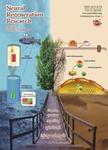A standardized method to create peripheral nerve injury in dogs using an automatic non-serrated forceps
A standardized method to create peripheral nerve injury in dogs using an automatic non-serrated forceps作者机构:Department of Neurosurgery Xinhua Hospital Shanghai Jiao Tong University School of Medicine Shanghai 200092 China The Cranial Nerve Disease Center of Shanghai Shanghai 200092 China
出 版 物:《Neural Regeneration Research》 (中国神经再生研究(英文版))
年 卷 期:2012年第7卷第32期
页 面:2516-2521页
核心收录:
学科分类:0710[理学-生物学] 090601[农学-基础兽医学] 1002[医学-临床医学] 1001[医学-基础医学(可授医学、理学学位)] 08[工学] 09[农学] 0906[农学-兽医学] 0802[工学-机械工程] 080201[工学-机械制造及其自动化]
基 金:supported by grants from the National Natural Science Foundation of China, No. 30571907 the International Science and Technology Cooperation Foundation of the Shanghai Committee of Science and Technology, China,No. 10410711400 the Shanghai Scientific and Technical Committee Project, No. 05QMH1409
主 题:oculomotor nerve forceps instrument nerve injury model quantitation cranial nerve peripheral nerve neural regeneration
摘 要:This study describes a method that not only generates an automatic and standardized crush injury in the skull base, but also provides investigators with the option to choose from a range of varying pressure revels. We designed an automatic, non-serrated forceps that exerts a varying force of 0 to 100 g and lasts for a defined period of 0 to 60 seconds. This device was then used to generate a crush injury to the right oculomotor nerve of dogs with a force of 10 g for 15 seconds, resulting in a deficit in the pupil-light reflex and ptosis. Further testing of our model with Toluidine-blue staining demonstrated that, at 2 weeks post-surgery disordered oculomotor nerve fibers, axonal loss, and a thinner than normal myelin sheath were visible. Electrophysiological examination showed occasional spontaneous potentials. Together, these data verified that the model for oculomotor nerve injury was successful, and that the forceps we designed can be used to establish standard mechanical injury models of peripheral nerves.



